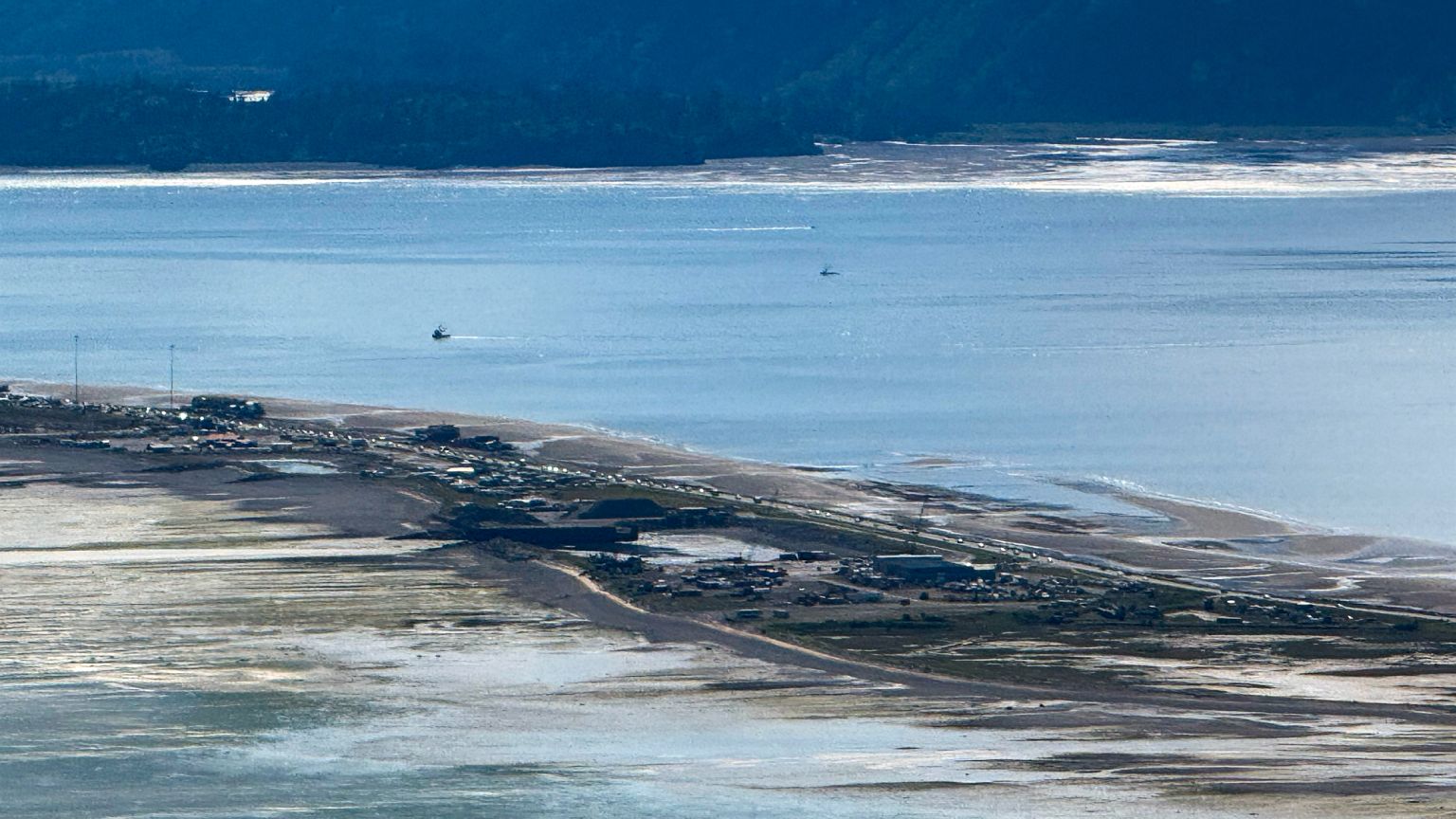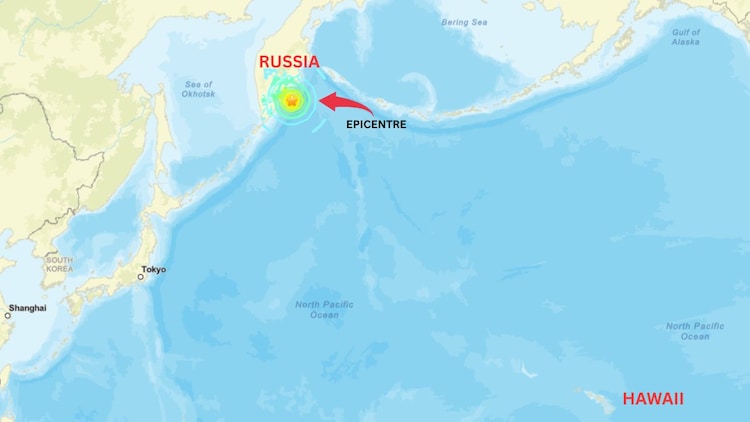A series of powerful earthquakes jolted Russia’s Kamchatka Peninsula on Sunday, sending shockwaves—both literal and symbolic—through the region and around the world. The strongest tremor, measuring 7.4 on the Richter scale, shook the remote territory and sparked temporary tsunami warnings across the Pacific. The dramatic swarm of tremors underscored Kamchatka’s title as one of the globe’s most volatile seismic zones and left residents, governments, and emergency centers scrambling for response.
The multiple quakes unleashed immediate concern, though no major damage or casualties were reported. Local resilience, quick warnings, and robust geological monitoring buffered what could have been a much greater disaster. Still, the event has captured global attention and trended widely across news platforms, especially in India, where interest in seismic activity, international safety, and geopolitical alerts runs high.

1. The Quake Sequence: A Day of Tremors
On the morning of July 20, 2025, within less than an hour, at least three strong earthquakes and several smaller shocks rocked the region off the coast of Kamchatka. The sequence unfolded dramatically:
-
A magnitude 6.7 tremor reported earliest in the morning.
-
Followed swiftly by the strongest earthquake, at magnitude 7.4.
-
Minutes later, a 6.6 magnitude aftershock further rattled nerves and structures.
Residents across remote towns and coastal villages described powerful horizontal shaking that lasted more than 30 seconds. The shallow depth of some of the tremors caused them to be strongly felt even far from the epicenter. People ran into the streets, fearing building collapses and potential tsunami waves. Emergency sirens blared, warnings were issued, and communication networks activated.
2. Shockwaves in a Volatile Zone
The Kamchatka Peninsula is no stranger to seismic events. Located along the Pacific Ring of Fire, it sits at the intersection of major tectonic plates. Deep beneath the Earth’s surface, the Pacific Plate converges with the North American Plate, creating enormous tension and friction.
While local authorities and geologists constantly monitor this region, Sunday’s clustering of high-magnitude quakes was distinctly alarming. Typically, such quakes are either isolated or lead to one dominant aftershock. But here, a rapid sequence increased fears of a larger tremor still to come, though experts later suggested the bulk of energy release had likely occurred.
3. Tsunami Warnings Issued and Lifted
In the immediate aftermath of the earthquakes, regional disaster agencies issued precautionary tsunami warnings for eastern Russian coastlines and other Pacific Ocean regions. Communities along Kamchatka’s eastern shore were warned to evacuate from low-lying areas, and schools and public offices were closed for the day.
Temporary alerts were extended to far-off areas including Hawaii, parts of Alaska, and Japan’s eastern shores. In some areas, emergency teams prepared for wave surges, shoreline flooding, and potential boat evacuations. Ultimately, no significant waves were recorded beyond a few centimeters of sea level fluctuation—a fortunate outcome that prevented broader disaster.
By late afternoon, authorities confirmed that no destructive tsunami had formed, and warnings were safely lifted across the impacted regions.
4. Local Impact: Residents on Edge
In towns like Petropavlovsk-Kamchatsky—Kamchatka’s largest city—sirens and automatic phone alerts had people scrambling moments after the first major tremors. Residents gathered at parks and open grounds, waiting for updates. Supermarkets closed temporarily, and emergency lines were flooded with calls.
According to observers on the ground, while some buildings swayed precariously, the region’s infrastructure—designed with seismic resilience in mind—largely held up. No complete structural failures or loss of life were reported. Minor cracks, ceiling debris, and electricity disruption were the most common complaints.
Despite all this, the psychological toll loomed large. Citizens spoke of flashbacks to earlier disasters and widespread anxiety about whether the tremors would escalate further. Some chose not to return to their homes that night, instead sleeping in cars or open spaces.

5. International Ripples: A Wider Geographic Scope
What happens in Kamchatka has the potential to affect a large portion of the planet. A strong earthquake in this zone quickly activates international coordination systems that link regional geologists, tsunami tracking centers, and disaster response teams.
Although no injuries were reported in countries outside Russia, tremor data was carefully followed in coastal regions across the Pacific. Response teams in Japan, the Philippines, and New Zealand monitored sea pressure changes, while emergency coordination units prepared fallback plans. Mercifully, none were needed.
In Hawaii and the U.S. West Coast, brief tsunami watches captured public attention. Ultimately, the alerts were canceled, but not before invoking memories of past tragedies and emphasizing how closely interconnected oceanic nations have become due to these shared seismic threats.
6. Scientific Perspective: Why Kamchatka Is Always Under Watch
The Kamchatka Peninsula is considered one of the most geologically active parts of the world. With more than 30 active volcanoes and a persistent risk of magnitude 8+ earthquakes, the region keeps scientists constantly alert.
Sunday’s seismic sequence fits into a broader historical trend. Kamchatka has experienced multiple sizable tremors over the past century, including a magnitude 9.0 earthquake and tsunami in 1952 that caused extensive damage across the Pacific.
Geologists explain that ongoing subduction below Kamchatka slowly builds up stress in Earth’s crust over decades. When that stress becomes too great, it releases through earthquakes—small or large depending on how much energy has accumulated along fault boundaries.
This particular event—being both offshore and relatively shallow—was considered “high-risk” for triggering tsunami activity. In that context, the outcome could have been significantly worse if not for effective early warning systems and the quake’s specific movement direction.
In the aftermath of the seismic event, the emotional impact on the local population cannot be understated. Residents of coastal villages described the unsettling eeriness of hearing both the earth rumble and the sea groan—a potent combination that recalled past disasters. Even though no major destruction occurred this time, the fear of what could have been was palpable. Many families prepared emergency kits, filled vehicles with supplies, and kept their children indoors for hours after the tremors subsided. In schools, teachers arranged impromptu lessons that doubled as comfort sessions, explaining the science behind earthquakes in an effort to ease young minds. It was a community effort driven not just by survival, but by solidarity and calm under pressure.
Local authorities praised the quick action of emergency response teams who were deployed to monitor coastal activity, check infrastructure, and coordinate with national and military resources in case evacuations had to be scaled. The region’s volcanic research centers and seismic stations, already prone to regular monitoring due to Kamchatka’s geography, were on high operational alert even before the main tremor hit. Their real-time seismic data was crucial in issuing quick tsunami warnings and lifting them once the threat had passed. These institutions, often overlooked in public discourse, were applauded as silent guardians behind the scenes, showcasing how scientific investment translates directly into lives saved.
Globally, the psychological effects of such events reverberate far beyond the physical quake zones. Travelers, shipping companies, and maritime agencies around the Pacific Rim temporarily re-evaluated safety protocols until reassurances came in. In an age where social media accelerates the spread of news and panic alike, millions worldwide were momentarily glued to screens, watching every update. The incident also reignited interest in disaster-readiness apps, smart home alert systems, and advanced GPS-based tracking tools. Companies that specialize in earthquake monitoring technology reported spikes in inquiries and downloads, signaling a wider digital shift in how individuals and institutions approach disaster preparedness.
Finally, as calm settled over Kamchatka and international attention began to shift elsewhere, one central lesson remained: seismic risks are not quixotic or faraway threats—they are recurring realities in a world where climate extremes and tectonic tensions are likely to grow. The fact that humanity can predict, respond, and recover with increasing precision is encouraging, but the memory of events like this must stay alive to sustain the urgency for investment, cooperation, and education. Kamchatka’s earth may have quieted, but its warning continues to echo—urging us to be vigilant, informed, and always a step ahead of nature’s next move.
7. India’s Interest and Global Seismic Awareness
India, though not directly affected, followed the events carefully. With Indian students, business personnel, and tourists in Russia and the Far East, brief advisories were shared about safety, contact information, and evacuation guidance, if needed.
India has its own history with devastating quakes and tsunamis, the 2004 Indian Ocean tsunami being the most tragic of all. As such, the Indian government has built advanced tsunami monitoring stations and has cooperative agreements with Pacific nations for shared alerts.
Indian agencies used this moment to remind domestic coastal states—like Tamil Nadu, Odisha, and Andhra Pradesh—about the importance of drills, coastal fencing, and early education protocols for seismic safety. Social media chatter also reflected India’s increasing interest in geoscience and global hazard exposure.
8. Precaution, Infrastructure, and the Road Ahead
Although damage remained minimal and loss of life was prevented this time, Sunday’s quakes served as a loud warning bell for regional planning. Disaster preparedness, especially in earthquake-prone zones, requires heavy investment in not just equipment but training, materials, and public awareness.
Russia’s Far East is known for being geopolitically sensitive and sparsely connected by infrastructure, which means quick aid deployment is often difficult. In the current context, experts are calling for more robust earthquake shelters, better road access to remote villages, and 24/7 marine surveillance facilities.
Already, regional leaders have pledged to allocate funds to earthquake-proof schools and redesign older buildings that predate seismic regulation codes. These steps, although long overdue, could save lives in the next big event.
Final Thoughts: The Calm After the Shake
Kamchatka’s multiple quakes in July 2025 are a reminder of nature’s unpredictability and the swift rise of risk in volatile regions. While this incident did not spiral into widespread devastation, it forced an immediate test of procedures and protocols across multiple nations and agencies.
Whether in Russia, India, Southeast Asia, or the Americas, citizens and policy planners alike are now reflecting on just how vital rapid communication, joint preparedness, and infrastructure resilience have become.
These earthquakes may have ended with little visible damage—but the lessons they carry might just cause tectonic shifts in how countries plan for tomorrow.
Follow: USGS

